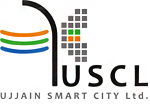Ujjain has an ancient cultural impact which is showcased even today.
Hingot and Akhara
The ancient martial arts Hingot and Akharas are specialties of this region which is prevalent even today.
Hingot war is an age-old tradition of residents of Gautampura area. It is observed on “DhokPadwa” day — a day after Diwali. Akharas in India literally means a wrestling ring in Hindi and followers of Lord Shiva and Lord Vishnu. AdiShankaracharya was the founder of seven major Indian Akharas known as Mahanirvani, Niranjani, Juna, Atal, Avahan, Agni and AnandAkhara. There are 14 Akharas in India 13 are listed as below and further divided as NirvaniAni,Digambar Ani and Nirmal Ani Akharas. These akahras are also known as Sanyasis and Bairagi Sadhus Akharas, the 14 one is the newest one but yet to find the name.
The KumbhMela that takes place once in every year twelve year and only in four places in India, one of them is Ujjain. On the occasion of this pious festival, lakhs of pilgrims from India and abroad take bath here and exhibit their religious faith.
The most peculiar feature is the procession of the seers and sages moving towards the kshipra, for the holy dip. These religious leaders stay in Ujjain during the whole Simhastha period and take bath on specific bath-days with great faith and enthusiasm with their sectorial banners (Nissan’s). Among all the ancient temples, the most respected is Mahakaleshwar. Apart from this, on the occasion of religious fairs held on Nagpanchami and Mahashivratri, nearly 5 to 10 lakhs pilgrims come to Ujjain.Although the city majorly constitutes Hindu population.There are people from different religions like Islam, Parsietc and also coexist and contribute to unity in Diversity.
Lifestyle of Ujjain
A large population of the city speaks Hindi, however the village flock speaks Malwi, which is spoken from time immemorial. Besides these two languages, Urdu is also widespread especially in midst of the Muslim community. In the era of globalization and modernisation people in the city are also picking up English. The city is widely recognised for its paper made products, mud-dolls and figurines which are made by craftsmen belonging to the Nagvanashi community.
A hefty percentage of the inhabitants of the city thrive on wholesale and retail business. The city doles out as a provincial wholesale market for food grains and added commodities. It also serves as a market for farm commodities like soybean, wheat, pulses, oilseeds, flowers, rice etc, which are sourced locally through the nearby villages. The surrounding villages having fertile land not only contribute to the agricultural need s of the state but are also catering in the fields of horticulture oil seeds, floriculture, thus strengthening trade and commerce of the city. The city of Ujjain is fashioned by geologically featured kshipra and has two divisions,old housing Mahakal Temple and the recently urbanized area.
Festivals in Ujjain
The city having a dominant Hindu population celebrates all Hindu festivals like Holi, Nag Panchmi, Rakhi, Ganesh Utsav, Dusshera, Diwali etc. Being the home to one of the 12 Jyotirlingas, MahaShivratri is a full-size occasion in the city. Thousands gather near the Mahakal Temple to seek blessings of Lord Shiva. The SimhasthaKumbhMela is a grand affair which is conducted once in twelve years. The splendour and the overwhelming manifestation of the bathing ritual at the Simhastha defy explanation. Commencing on the full moon day in the Chaitra month, it goes on till Vaishakha, until the subsequent full moon day.
People of Ujjain
Upon visiting the city, one is greeted by the citizens from all across the country. The people are extremely societal and developed thus signifying the world how all cultures from north, south, east and west have been blended in the culture of Ujjainians, thus reflecting the right character of “Unity in Diversity”. The composite culture can be consistently seen in the distinctive food habits including South Indian ‘Idli-Dosa’ to ‘Dal-Bafla’ classic Malwa cuisine.
Although the city mainly comprises of Hindu population, there are people all religions coexisting and contributing to the growth and development of the city in a comprehensive way. People from diverse economical and spiritual background coexist in the municipality whirling it into a multi-ethnic place. The rich heritage of learning has led to the progress of Knowledge city near the city of Ujjain which comprises of infrastructure for Engineering, Management studies, Medicine and many more.
85% people are Hindus, although there are a handful Muslims, Sikhs, Parsees, Christians and Jains too. Due to the Hindu majority, the place has a number of Hindu pilgrimages of world fame. The locals, in general, are very religious and actively participate in festivities and spiritual activities. They are also extremely friendly and welcoming towards tourists, as well as take great pride in briefing outsiders about their gem, their city. The inhabitants of Ujjain have a simple lifestyle primarily based on the religious importance of the city. Additionally, being a part of Malwa region, agriculture is an important occupation of the people here.
